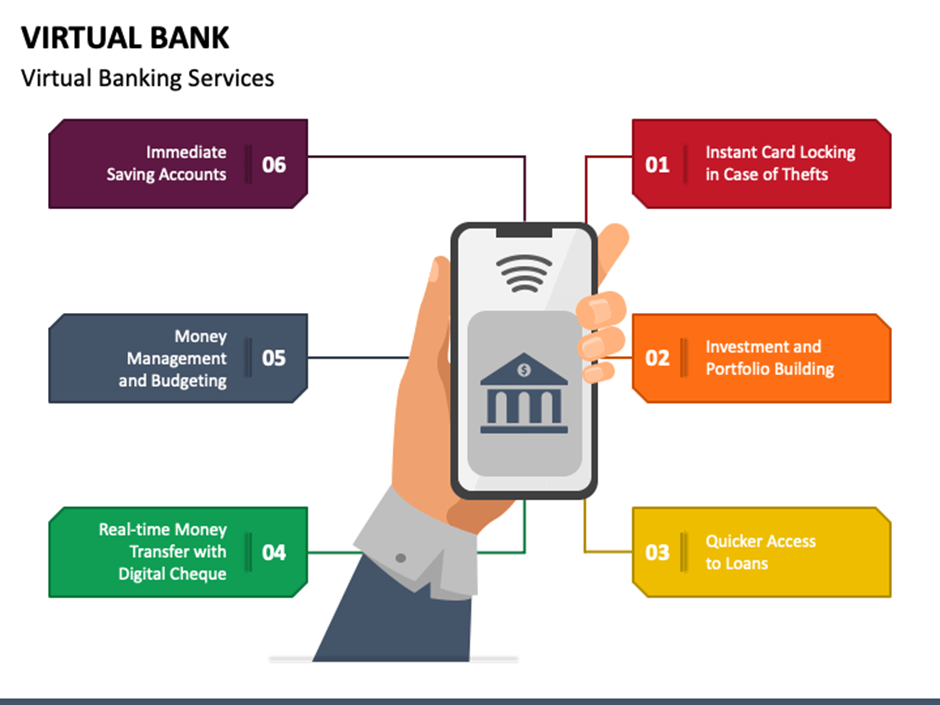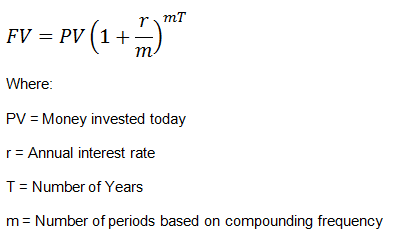Kapittel 7: Spare- og nødfond
Lesson Learning Objectives:
Lorem ipsum dolor sit amet, consectetur adipiscing elit. Ut elit tellus, luctus nec ullamcorper mattis, pulvinar dapibus leo.
Introduction to Saving and Financial Products
Understanding various financial products and the importance of saving is crucial in personal finance management. This chapter delves into different types of bank accounts, the significance of emergency funds, and how inflation and interest rates affect savings. Additionally, it covers the basics of financial institutions and how to effectively manage and grow personal finances.

7.1 Types of Accounts and Financial Services
Financial Institutions offer a range of accounts and services, each designed for specific financial needs:
Checking Accounts:
Used for daily transactions. They usually come with a debit card and offer unlimited deposits and withdrawals.
- Advantages: Easy access to funds, debit card access, online bill pay.
- Disadvantages: Typically low or no interest earned.
Savings Accounts:
Aimed at short-term savings over time. Offer interest on the stored funds.
- Advantages: Earn interest, low risk.
- Disadvantages: Limited withdrawals, potentially lower interest rates compared to other savings products.
Money Market Accounts (MMAs):
A blend of checking and savings accounts, usually with higher interest rates and higher minimum balance requirements.
- Advantages: Higher interest rates, check-writing privileges.
- Disadvantages: High minimum balance requirements, limited transactions.
Certificates of Deposit (CDs):
Fixed-term savings account with a guaranteed interest rate.
- Advantages: Higher interest rates compared to savings accounts, fixed returns.
- Disadvantages: Penalties for early withdrawal, money is inaccessible until the term ends.
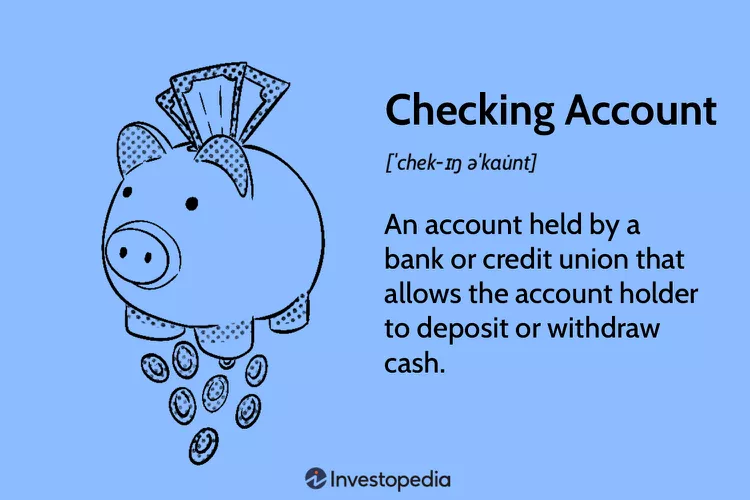
Figure: What is a Checking Account?
Beskrivelse:
This image visually defines a checking account, which is a primary tool for managing day-to-day finances. It highlights the main features of the account, such as a debit card and paper checks, which are used to make purchases and pay bills. The graphic serves as a simple introduction to one of the most basic and essential products in personal finance.
Viktige takeaways:
- EN checking account is a type of bank account that provides easy access to your money for daily transactions.
- It is designed for high liquidity, meaning you can withdraw or spend your money quickly using tools like a debit card, ATM, or online transfers.
- The main purpose of this account is for spending and bill payments, not for earning interest; most checking accounts offer little to no interest on your balance.
- Keeping track of your transactions through a bank statement or online portal is crucial for budgeting and avoiding overdrafts.
Application of Information:
- EN checking account is the foundation of personal financial management, acting as the operational center for your income and expenses.
- Learning to manage a checking account is a critical first step in creating a budget, tracking your spending, and building good financial habits.
- For anyone new to finance, this account is an essential tool for safely storing money, paying bills efficiently, and participating in the modern economy.
Opening and Managing an Account:
Opening a bank account typically requires providing personal identification, Social Security Number, and an initial deposit. Managing an account involves monitoring balances, making deposits and withdrawals, and understanding fees like minimum balance requirements and overdraft charges.
Account Components:
An account number uniquely identifies your account, while the routing number identifies your bank — crucial for direct deposits and setting up automatic payments.
Credit Unions vs. Commercial Banks:
Credit unions typically offer lower fees and better interest rates but might have fewer branches and services. Commercial banks offer a broader range of services but may charge higher fees.
Evaluating Financial Products for Students
Students should consider checking and savings accounts with low fees, easy access to funds, and educational resources to help manage their finances. Advantages include learning money management and earning interest on savings. Disadvantages may involve managing minimum balance requirements or navigating potential fees.
7.2 Online Banking and Account Management
Online Banking provides convenient access to financial services, including account opening, balance checking, and fund transfers. Key components include understanding minimum balance requirements, monthly fees, overdraft penalties, and interest rates. It’s essential to track and manage funds regularly to ensure accounts cover transactions and avoid fees.
Figur: Key Benefits of Online Banking
Beskrivelse:
This graphic illustrates the main advantages of using online banking for managing personal or business finances. It visually highlights key features such as 24/7 account access from any device, the ease of making digital payments, and real-time transaction monitoring. The overall message is that online banking offers a more convenient, efficient, and powerful way to handle financial tasks.
Viktige takeaways:
- Constant Accessibility: A major benefit of online banking is 24/7 access to your accounts from anywhere with an internet connection, eliminating the need to visit a physical bank.
- Efficiency and Cost Savings: It saves significant time by allowing you to automate bill payments and transfer funds instantly, and it often comes with lower fees than traditional banking services.
- Enhanced Financial Control: Online banking provides real-time visibility into your transactions and account balances, which is crucial for accurate budgeting and managing cash flow.
- Simplified Record-Keeping: Many platforms can integrate with accounting software, which automates bookkeeping and makes financial reporting much easier for individuals and businesses.
Application of Information:
- Adopting online banking is a foundational step for modern and efficient money management.
- It provides the tools to actively track your spending, automate your savings contributions, and maintain a clear, up-to-the-minute picture of your financial health.
- By leveraging these digital tools, you can reduce time spent on financial administration and focus more energy on achieving your primary goals, like investing for the future or growing a business.
Interest Rates and Savings
When demand for loans increases, banks may offer higher interest rates on deposits to attract more savers, providing them with the funds to lend out. Conversely, in a saturated loan market or economic downturn, the demand for borrowing decreases, and banks may lower interest rates on savings accounts.
Mobile Payment Accounts vs. Traditional Banking
Mobile Payment Accounts offer convenience and ease of use but typically lack interest earnings, reducing the potential for savings growth compared to traditional Savings Accounts, which offer interest. Cryptocurrency Accounts offer high volatility and potential returns but lack federal insurance, contrasting with the safety and steady growth potential of federally insured savings accounts.
7.3 Comparing Mobile Payment Accounts, Cryptocurrency Accounts, and Traditional Bank Accounts
While mobile payment platforms like Venmo or Cash App and cryptocurrency wallets offer convenience and fast transactions, they typically do not provide interest earnings or federal insurance protections (like FDIC or NCUA insurance). Traditional savings and checking accounts offer lower risk, provide interest (even if modest), and are protected against institutional failures up to certain limits.
Feature | Mobile Payments | Cryptocurrency Accounts | Traditional Bank Accounts |
Forsikring | No federal insurance | No federal insurance | FDIC/NCUA insured |
Interest Earnings | None | Very rare | Common (low to moderate) |
Accessibility | High (instant transfer) | High (global access) | High (ATM, online banking) |
Risk Level | Medium to high | High (market volatility) | Low |
7.4 Why Certificates of Deposit (CDs) Typically Pay Higher Interest Rates
Certificates of Deposit (CDs) generally offer higher interest rates than regular savings accounts or interest-bearing checking accounts because they require depositors to commit their money for a specific period. This commitment gives banks more certainty about the availability of funds for lending and investments. In exchange for giving up liquidity (easy access to their funds), depositors are rewarded with higher rates. Early withdrawal often results in penalties, reinforcing the importance of keeping funds deposited for the full term.
Eksempel:
A savings account might offer a 1% interest rate, while a 12-month CD could offer 4% during the same period.
Fordeler:
- Higher guaranteed returns over the term.
- Safe and predictable growth.
Ulemper:
- Funds are locked until maturity.
- Penalties for early withdrawal.
7.5 Impact of Loan Demand on Deposit Interest Rates
When the demand for loans rises, banks often need additional funds to meet the demand. To attract more deposits (which they use to fund new loans), they may offer higher interest rates on savings accounts, CDs, and other deposit products. Essentially, banks are willing to pay more to bring in money they can lend out profitably.
Eksempel:
If mortgage applications rise sharply, banks may raise deposit rates from 1.5% to 2% to attract savers and balance their funding needs.
7.6 Market Conditions Leading to Lower Savings Rates
In times of economic slowdown or when consumers and businesses are not borrowing as much, banks don’t need as many deposits. As a result, they may lower the interest rates paid on savings accounts. This often occurs during recessions or when central banks lower benchmark interest rates to stimulate the economy.
Eksempel:
During a recession, banks may drop savings account interest rates from 2% down to 0.5%, reflecting lower loan demand and economic conditions.
7.7 Impact of Spending vs. Saving
Choosing between spending immediately and saving for the future is a common dilemma. Immediate gratification can lead to regret if it prevents achieving more significant financial goals, such as purchasing a home or securing a comfortable retirement.
Scenario 1:
Emily decides to buy a high-end laptop on impulse, drawn by its advanced features. Months later, she regrets not saving that money for a professional certification that could have advanced her career, highlighting the importance of prioritizing long-term financial goals over immediate gratification.
Scenario 2:
After receiving a bonus, Jake immediately books an expensive vacation. While enjoyable, he later wishes he had saved part of the money for an emergency fund when his car needed unexpected repairs, emphasizing the balance between enjoying the present and preparing for the future.
Figur: Pay Off Debt vs. Save Money: Which Comes First?
Beskrivelse:
This image tackles the common financial dilemma of whether to focus on paying off debt eller building savings. It presents a clear, step-by-step guide to help you decide where to direct your money first. The framework helps you create a balanced strategy that allows you to build a financial safety net while efficiently eliminating debt.
Viktige takeaways:
- The first priority for almost everyone should be to build a starter emergency fund of at least $500 to $1,000. This prevents small emergencies from forcing you into more debt.
- After establishing a small emergency fund, you should aggressively pay down any high-interest debt, like credit card balances, as the interest charged is often very high.
- If your employer offers a retirement plan with a company match, contribute enough to get the full match, as this is essentially a 100% return on your investment and a top priority.
- Once high-interest debt is gone, you can adopt a balanced approach by simultaneously building your full 3-6 month emergency fund and saving for other long-term goals.
Application of Information:
- This model provides a clear roadmap to help you make smart decisions and reduce financial stress when you have competing financial priorities.
- You can use this framework to create an effective cash flow plan, ensuring your money is allocated in the most impactful way.
- By following these steps—starter emergency fund, attacking high-interest debt, and securing an employer match—you can build a strong financial foundation for future wealth creation.
7.8 Inflation and Interest Rates
Inflation diminishes the value of money over time, reducing the purchasing power of savings. The nominal interest rate doesn’t account for inflation, while the real interest rate (nominal rate minus inflation rate) indicates the actual growth of savings. Savers should seek a nominal rate that outpaces inflation to preserve their savings’ value.
Interest rate= nominal interest – rate of inflation
Eksempel:
If the nominal interest rate on a savings account is 3% and the inflation rate is 2%, the real interest rate is effectively 1%. Over one year, the purchasing power of the money in this account grows by only 1% when adjusted for inflation, underscoring the importance of seeking savings or investment options that outpace inflation to genuinely grow wealth over time.
7.9 Inflation Protection and I Bonds
Bonds are designed to protect against inflation, as their interest rates adjust with inflation. When inflation rises, the interest rate on Bonds increases, ensuring that the savings maintain their purchasing power over time, unlike traditional CDs, where fixed interest rates might result in negative real returns in high inflation environments.
Future Value and Discounting
Figur: Calculating the Future Value of a Single Cash Flow
Beskrivelse:
The infographic likely demonstrates the formula for calculating the future value of a single cash flow, which is a fundamental concept in finance. This formula helps in understanding how much an investment made today will grow to at a future date, considering a specific rate of interest. The formula is typically represented as FV = PV(1 + r)^n, where FV is the future value, PV is the present value, r is the interest rate, and n is the number of periods.
Viktige takeaways:
- The future value (FV) formula is crucial for calculating how investments grow over time.
- Understanding this formula allows investors to estimate the worth of investments in the future.
- The variables in the formula include the present value (PV), interest rate (r), and number of periods (n), each playing a critical role in the calculation.
Application of Information:
This concept is essential for anyone involved in financial planning, investment analysis, or saving for future goals. By applying this formula, individuals can make informed decisions about their investments, understanding how different rates of interest and time periods affect the growth of their money. It encourages strategic investment and helps in setting realistic expectations for investment returns, which is fundamental for long-term financial planning and wealth accumulation.
Using a spreadsheet, we calculate that a 10-year-old needs to save $200 a month at a 5% annual interest rate to afford one year of college tuition, estimated at $20,000 eight years from now. This example illustrates discounting the future value of money, accounting for interest to determine how much needs to be saved today to meet future financial goals.
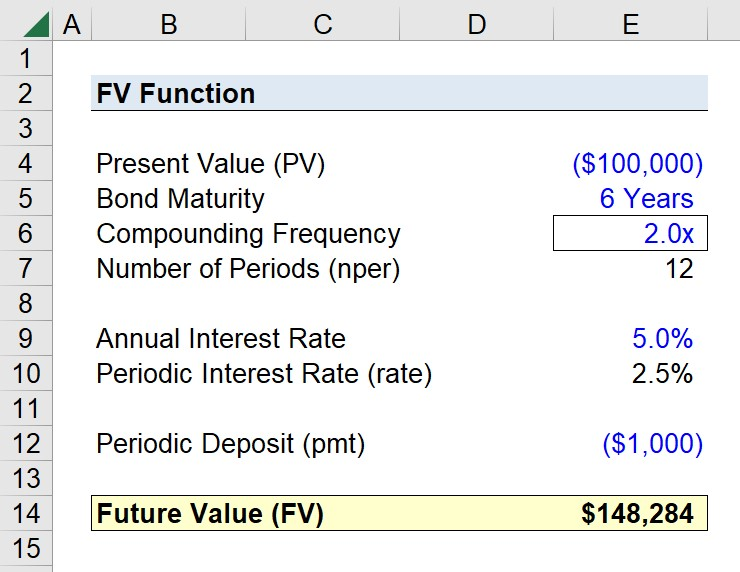
Figur: Using the FV Function in Excel to Calculate Future Value
Beskrivelse:
The infographic likely demonstrates how to use the FV function in Excel to calculate the future value of an investment, considering a constant interest rate over a number of periods. The FV function is a powerful tool in Excel for financial analysis, allowing users to input variables such as rate, number of periods, payments, present value, and type (whether payments are made at the beginning or end of periods) to compute the future value of an investment.
Viktige takeaways:
- The FV function in Excel is essential for calculating the future value of investments.
- Key inputs for the FV function include interest rate, number of periods, periodic payments, present value, and payment timing.
- Understanding how to use the FV function can significantly enhance financial modeling and investment analysis skills.
Application of Information:
This knowledge is crucial for finance students, financial analysts, and anyone involved in investment planning or analysis. By mastering the FV function, users can quickly assess the potential future value of investments, aiding in decision-making processes. It’s particularly useful for evaluating the growth of savings accounts, retirement funds, or any investment over time, providing a clear picture of financial futures.
7.10 Down Payments and Loans
Making a down payment on a loan, like a 20% down payment on a home, reduces the total amount borrowed, leading to lower monthly payments and often better interest rates. This makes the borrower more attractive to lenders and can significantly reduce the cost of the loan over time.
7.11 Emergency Funds and Financial Planning
An Emergency Fund is critical for financial stability, providing a safety net for unexpected expenses. Creating and maintaining a budget that includes allocations for short-term and long-term savings ensures preparedness for life’s uncertainties and progress towards financial goals.
Eksempel:
Maria’s car breaks down, requiring expensive repairs. She revises her budget to reduce discretionary spending and reallocate funds from her entertainment and dining out categories to cover the repair costs, while temporarily reducing contributions to her savings account.
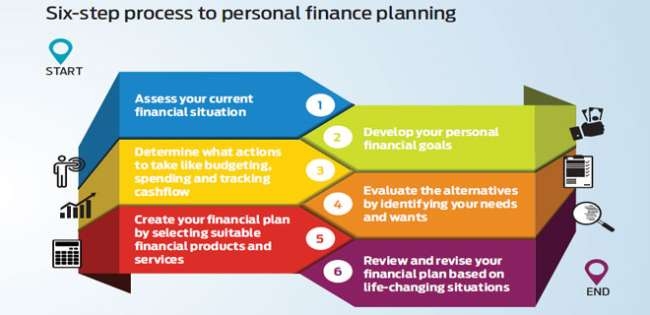
Figur:Six-Step Process to Personal Finance Planning
Beskrivelse:
The image introduces a six-step process for personal finance planning. It begins with assessing one’s current financial situation, including assets and liabilities, and proceeds through setting financial goals, creating an action plan, evaluating investment options, implementing the plan, and regularly reviewing and revising the strategy.
Viktige takeaways:
- Assessment of current finances is crucial as a starting point for planning.
- Goal setting involves assigning value and timelines to short, medium, and long-term financial aspirations.
- En action plan must consider one’s risk tolerance and align investment choices accordingly.
- Investment options should be linked to specific goals and chosen based on tax efficiency and suitability.
- Regular investment contributes to habit formation and smooth achievement of financial goals.
- Periodic reviews ensure that investments are on track and allow for adjustments as needed.
Application of Information:
Starting with an assessment of one’s current financial situation is foundational in personal finance planning. By understanding where you stand financially, you can set realistic goals, identify areas of improvement, and create a roadmap to achieve financial stability and growth. This step ensures that subsequent planning is grounded in reality and tailored to an individual’s unique financial circumstances.
Contingency Planning for Financial Emergencies
Contingency planning involves preparing for unexpected financial shocks by having backup savings or insurance. A good contingency plan can help cover emergency expenses such as car repairs, medical bills, sudden unemployment, or major household repairs without derailing long-term financial goals.
Eksempel:
- Backup Fund: Besides an emergency fund, maintain a small “contingency fund” specifically for very short-term needs.
- Insurance: Maintain adequate health, auto, and renters/homeowners insurance to mitigate major risks.
- Backup Budget: Create a reduced-spending version of your budget to activate if income drops suddenly.
Understanding Pay and Deductions
Gross Pay is an employee’s total earnings before any deductions. Net Pay, or take-home pay, is what remains after taxes, healthcare, and other deductions. Understanding the difference is essential for accurate budgeting.
7.12 Financial Institutions and Services
Financial Institutions, including banks, credit unions, and online platforms, offer various products like checking and savings accounts and financial planning services. Choosing the right institution and services is vital for effective money management and achieving financial goals.
Example of Account Management:
To manage a checking account effectively, regularly review transactions and reconcile with personal records to ensure accuracy. Utilizing mobile banking apps can simplify tracking and help avoid overdraft fees.
7.13 The Role of FDIC and NCUA Insurance
The Federal Deposit Insurance Corporation (FDIC) insures deposits at banks, while the National Credit Union Administration (NCUA) insures deposits at credit unions. Both agencies guarantee deposit accounts (up to $250,000 per depositor, per insured bank or credit union) in case the financial institution fails. This insurance provides consumers with peace of mind that their money is protected against institutional collapse.
Eksempel:
If your bank closes unexpectedly, the FDIC will reimburse your insured deposits up to the coverage limit.
Konklusjon
Saving, managing financial products, preparing for inflation, and understanding the broader banking environment are essential skills for long-term financial success. By supplementing your knowledge with insights about CDs, market influences on interest rates, the differences between mobile/crypto accounts and traditional banks, federal insurance protections, and emergency contingency planning, you’ll be even better equipped to protect and grow your financial future.
Viktig informasjon om leksjoner:
Lorem ipsum dolor sit amet, consectetur adipiscing elit. Ut elit tellus, luctus nec ullamcorper mattis, pulvinar dapibus leo.


